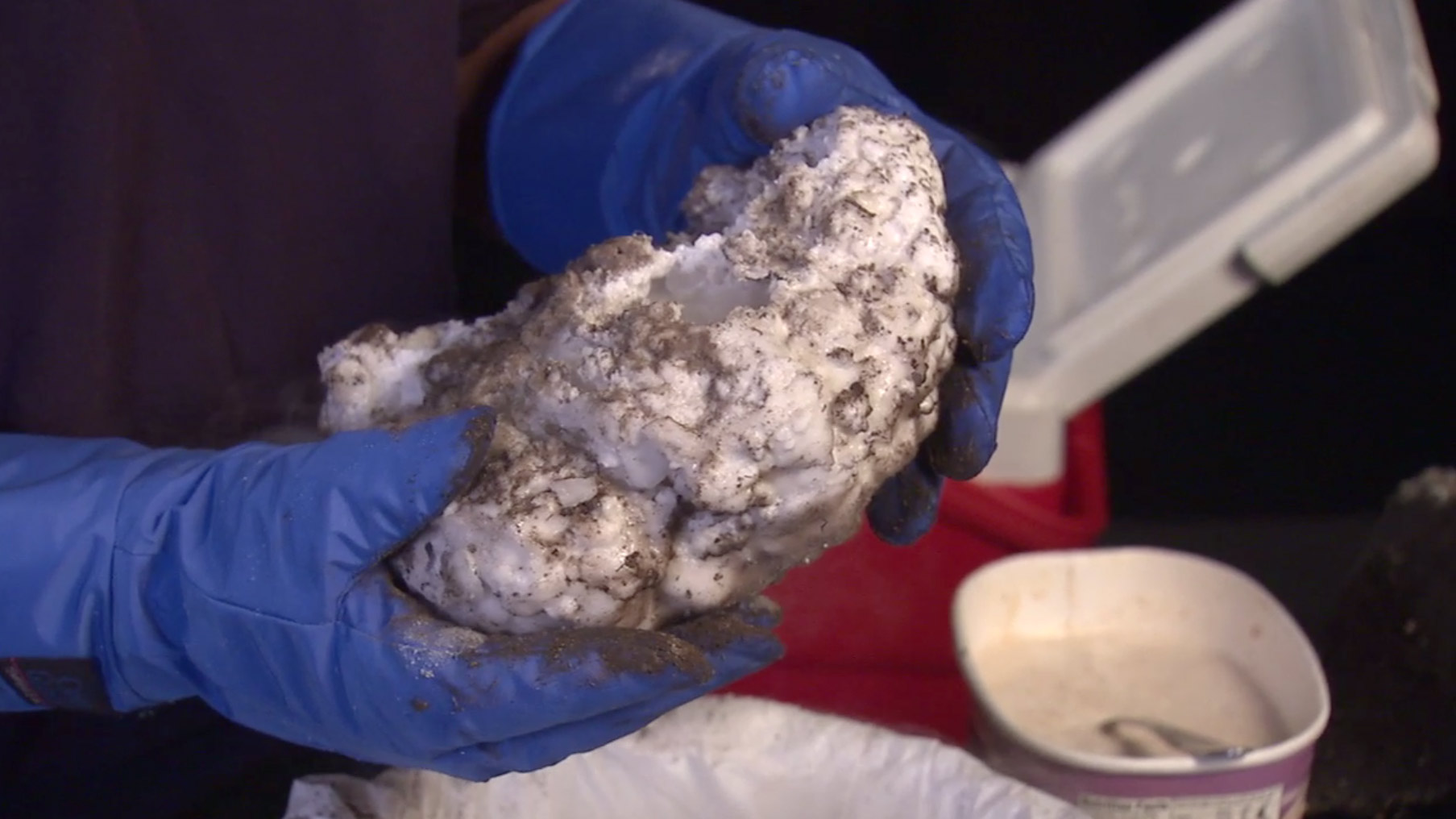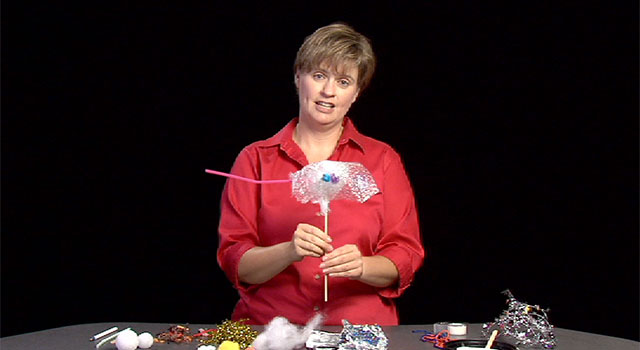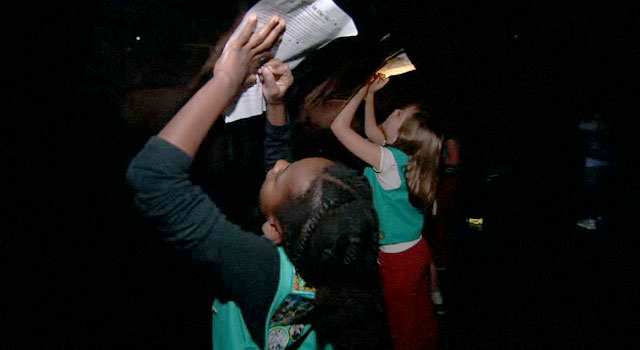Classroom Activity
Inflatable Planetarium - Stories in the Sky
Overview
In this activity, students will learn how ancient people related to constellations and asterisms, then use their imagination to create a star pattern and accompanying story. The instructor can have students draw their designs on paper or make an inflatable planetarium, in which students will poke out their star constellations.
Materials
Management
Inflatable Planetarium
Watch the "DIY Space: Inflatable Planetarium" video tutorial at the top of the page for instructions on assembling the planetarium.
Several facilitators are necessary for this activity if the inflatable planetarium is used (see the job descriptions below). Involve teachers, older students, and parent-volunteers. Note: This activity does not have to include the planetarium; it can consist only of creating the star pattern and writing a short story to accompany it.
Job descriptions for running the planetarium (3 persons total at all times)
- Supervisor: The supervisor will be inside the planetarium to monitor behavior and the total number of people inside, help with hole-punching, and use the flashlight to guide walking and viewing. In case of electrical failure, this person will guide participants out of the planetarium. The dome will remain inflated for several minutes allowing for orderly exit through the normal doors, but the plastic can easily be cut with scissors for an emergency exit. Large cuts will deflate the dome more rapidly.
- Exterior Manager: The exterior manager will help people in and out of the planetarium from the outside.
- Materials Manager: The materials manager will supervise the fan, electricity and general condition of the planetarium (generally from the outside).
Safety Tips
- The supervisor should have a flashlight and a pair of scissors in case an emergency exit is required.
- Interior carpeting improves footing.
- Although the interior volume of the planetarium is large and it does not get very dark inside, teachers should be aware of signs of claustrophobia or unease among students.
- At no time should an open flame be allowed anywhere in or near the outside of the dome
Background
There are about 3,000 stars visible to the naked eye on a clear night in dark skies. Throughout history, people have seen patterns in the stars. They imagined that the patterns looked like familiar objects and created stories to go along with them.These patterns are called asterisms. Some of these asterisms may be familiar to you, such as the Big Dipper.
The International Astronomical Union has identified 88 regions of the sky for naming star patterns called constellations. Other patterns, such as the Big Dipper, are called asterisms. Most constellation names are based on Greco-Roman mythology, though almost all cultures in the world have their own star patterns and stories. Constellations and asterisms can be used for finding directions in the sky as well.
About the Activity
From the very early stages of life, children begin to explore their natural surroundings and through this, engage in basic scientific thinking. The acquisition of language allows them to ask questions about what they observe and experience.
Science investigations are an excellent opportunity to engage students in meaningful reading and writing activities.
Research has shown marked improvement on school district and state writing proficiency exams among students involved in inquiry- and activity-based science with significant writing components. This lesson provides an engaging avenue to practice writing through science.
Procedures
Inflatable Planetarium
- Open the roll of black plastic, unroll the plastic and unfold until the full size is lying on the ground. This will take a big space such as a gymnasium or a clean space outside. The ground needs to be smooth and level underneath the planetarium.
- Take the corners and fold the plastic in half along the width of the sheet.
- Tape the “open sides” with utility tape being sure to fold the two plastic sheets over each other in a French fold so that there will be no “light gaps.”
- Cut the bottom out of the trash bag, creating a tube.
- Using scissors, opposite from the end that will have the entrance/exit, cut a hole that is the size of the open end of the trash bag on the underside of the sheet. Be sure to only cut through one layer of the sheet—not both.
- Line up the plastic bag tube with the hole in the planetarium and use utility tape to attach it to the plastic of the planetarium.
- In the same way, insert the unplugged fan in the other end of the trash bag and tape them together so that the air from the fan will blow through the trash bag tube into the planetarium.
- Now plug in the fan and the planetarium will inflate.
- Access to the planetarium may be accomplished by a simple inverted-T slit made by the teacher with scissors. An entrance and exit opening separated by a few feet is advised. In an emergency, the teacher can always easily cut open a side with scissors for exit.
- Carpet on the bottom of the planetarium will prevent slipping on the plastic.
Creating Stories in the Sky
- Assemble students and determine what they know about constellations. Discuss what a constellation is and ask if they can name some constellations or asterisms (constellations are specific groupings of stars designated and named by the International Astronomical Union, IAU; all other groups of stars the sky are known as asterisms). Ask students if they have ever created their own star patterns, or have thought about creating their own.
- Present students with the student activity sheet and crayons or markers and explain that they will be creating their own star pattern and writing a story or explanation to go along with it.
- By asking about their lives (where they live, who are the important people in their lives, what are important activities or hobbies they have), suggestions of possible patterns they could create can be provided. As they draw their star pattern, assistance may need to be given as to where to place stars so they successfully form a pattern. It may be useful to limit students to using six or seven stars. As they're drawing, help them articulate why the object they've chosen is meaningful.
- On the lines provided on the activity sheet, have students write a short, descriptive story about their star pattern, or explain its significance and why they chose it. They can use the back of the sheet if necessary. (Continue to steps 5 and 6, below, only if you plan to use the inflatable planetarium.)
- The planetarium supervisor will lead each group of approximately 15 students into the planetarium where they will poke holes representing each new star pattern into the plastic walls with a ballpoint pen or sharp pencil. Place the activity sheet on the plastic wall of the planetarium. Poke a hole through each star on the paper and through the plastic. Each hole is one star in the star pattern. Assistance may need to be given with poking holes in the plastic.
- Assemble the class or small group inside the planetarium when all the star patterns are complete. Have each student take a turn telling his or her story. Activity sheets may be collected for display, and then taken home.
Discussion
When all stories have been read, a discussion about themes of the stories can provide additional information. Past experience has shown that human nature tends to cluster stories around three themes:
- Stories about persons who are friends, famous, familiar or infamous
- Historical events in students’ lives or community
- Moral or societal lessons that need to be shared and remembered (e.g. kind behavior toward others is often rewarded with returned kindness)
Assessment
Assess student learning through questioning. Ask students to:
- Share what a constellation or asterism is.
- Explain how constellations and asterisms were once used.
- Compare and contrast their story with another story in the class.
- Share one thing they learned about another member of the class.








